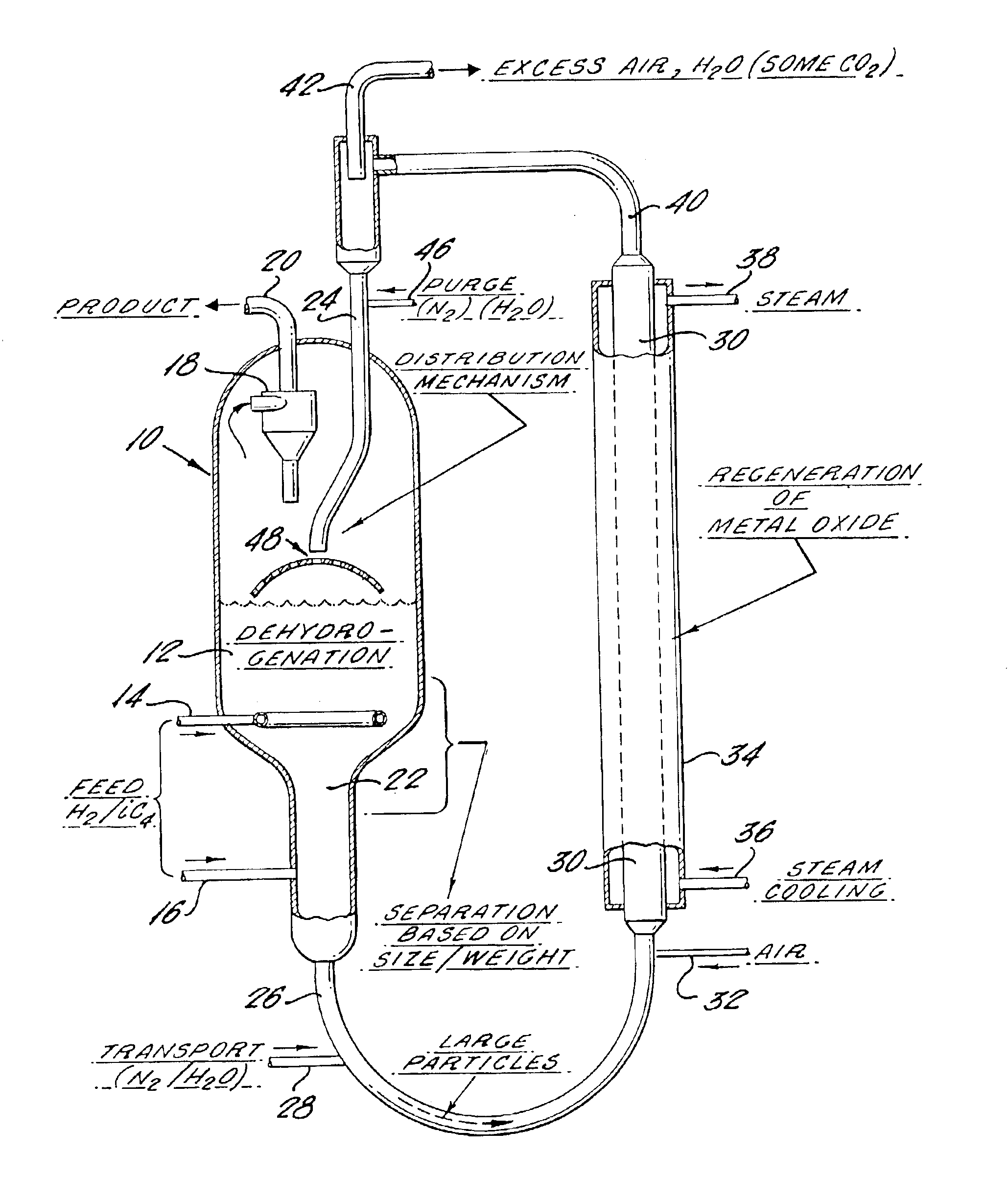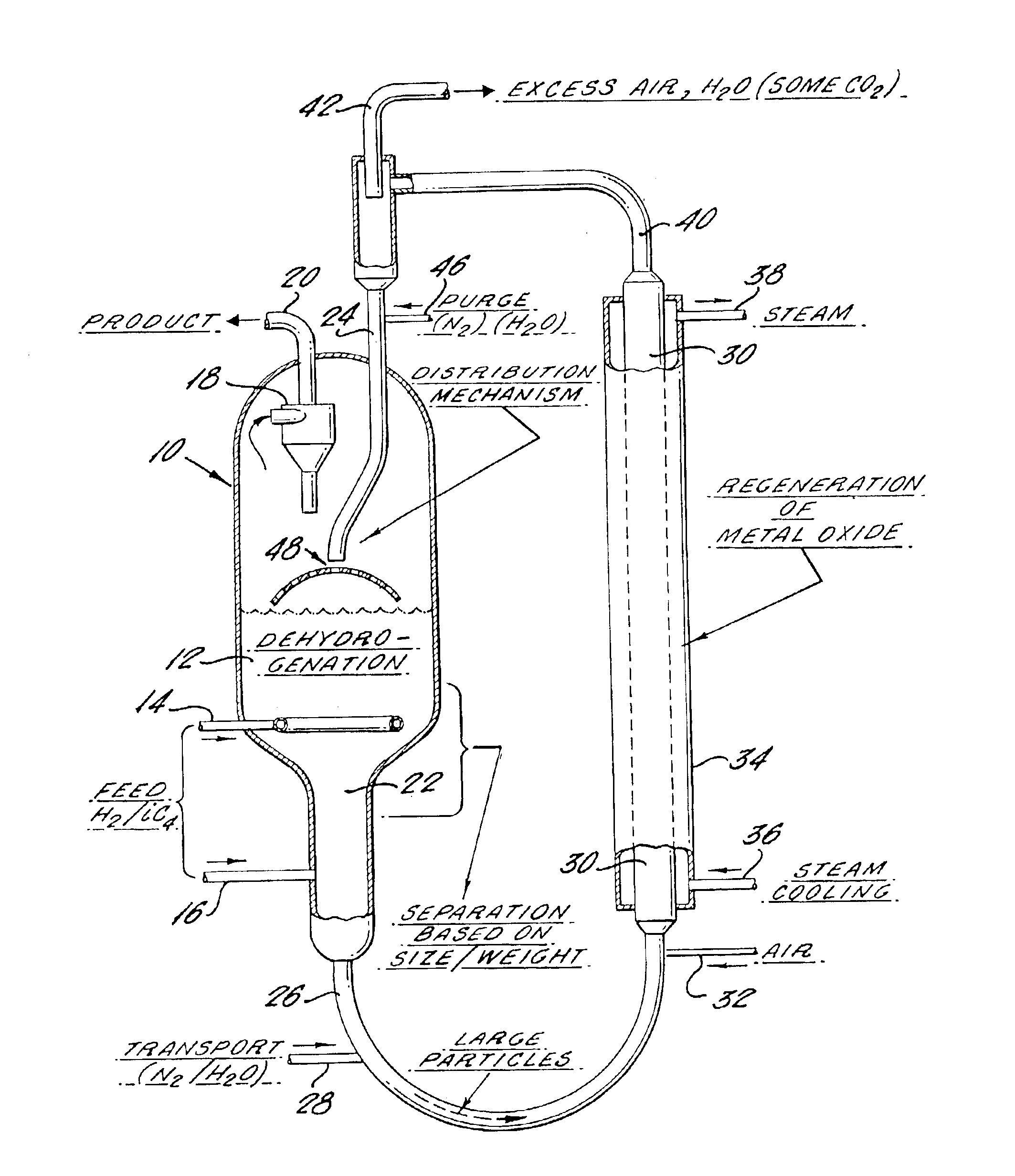Apparatus for endothermic reactions of organic compounds
an endothermic reaction and apparatus technology, applied in lighting and heating apparatus, physical/chemical process catalysts, furnaces, etc., can solve the problems of large investment capital requirements and operating costs associated with such endothermic processes, poor selectivity, and process usually end up limited in conversion
- Summary
- Abstract
- Description
- Claims
- Application Information
AI Technical Summary
Benefits of technology
Problems solved by technology
Method used
Image
Examples
Embodiment Construction
The process according to the invention is a process for conducting an endothermic reaction of a liquid or vaporous organic compound in the presence of molecular hydrogen and of multicomponent solids including a solid catalyst for the endothermic reaction and a hydrogen oxidizing solid reagent to react with the hydrogen. The solid catalyst and the hydrogen oxidizing solid reagent are intermixed, either as separate particles or incorporated within the same particle. The organic compound and the hydrogen are contacted with the catalyst and the hydrogen oxidizing reagent under conditions to produce organic products of the endothermic reaction and to react hydrogen by an exothermic reaction with the hydrogen oxidizing reagent to form deactivated hydrogen oxidizing reagent and water vapor. The deactivated hydrogen oxidizing reagent is reactivated by contact with an oxidizing agent in the absence of substantial quantities of hydrogen and in the absence of substantial quantities of organic ...
PUM
| Property | Measurement | Unit |
|---|---|---|
| pressure | aaaaa | aaaaa |
| temperature | aaaaa | aaaaa |
| average particle size | aaaaa | aaaaa |
Abstract
Description
Claims
Application Information
 Login to View More
Login to View More - R&D
- Intellectual Property
- Life Sciences
- Materials
- Tech Scout
- Unparalleled Data Quality
- Higher Quality Content
- 60% Fewer Hallucinations
Browse by: Latest US Patents, China's latest patents, Technical Efficacy Thesaurus, Application Domain, Technology Topic, Popular Technical Reports.
© 2025 PatSnap. All rights reserved.Legal|Privacy policy|Modern Slavery Act Transparency Statement|Sitemap|About US| Contact US: help@patsnap.com


